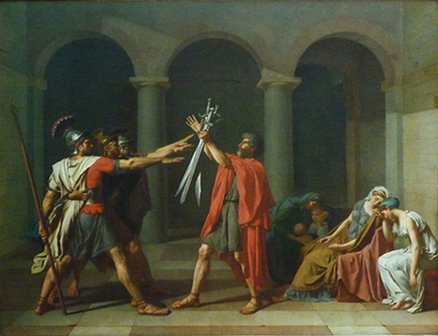Are you interested in learning about the key technology developments that will affect your place within higher education in the coming years? If so, check out the
NMC Horizon Report: 2012 Higher Education Edition. A collaboration between the New Media Consortium and the EDUCAUSE Learning Initiative, this is an annual must-read for those of us who wish to keep abreast with the emerging technology trends in academic teaching, learning, and creative inquiry.
Each year the report identifies
six technologies to watch, placed along adoption horizons ranging from near- to far-term, as well as a discussion of the
key trends and
significant challenges affecting the adoption of new technologies in higher education.
Why should we pay attention to the
Horizon Report? Many technologies cited in previous years' reports have since become commonplace in our academic vocabularies and practices, and those of us who fail to understand them risk being perceived as out of touch. Examples include social networks and knowledge webs, smart phones, grassroots video, user-created content, new forms of scholarly communication, cloud-based computing, geolocation technology, and electronic books.
Six Technologies to Watch in 2012
- mobile apps (time to adoption: one year or less)
- tablet computing (time to adoption: one year or less)
- game-based learning (time to adoption: two to three years)
- learning analytics (time to adoption: two to three years)
- gesture-based computing (time to adoption: four to five years)
- 'Internet of Things' (time to adoption: four to five years)
Following an introductory overview, each of these areas includes a section on their relevance for teaching, learning, research, or creative expression; a sampling of specific applications; links to specific examples; and links to articles and resources for further reading.
Key Trends
- People expect to be able to work, learn, and study whenever and wherever they want to.
- The technologies we use are increasingly cloud-based, and our notions of IT support are decentralized.
- The world of work is increasingly collaborative, driving changes in the way student projects are structured.
- The abundance of resources and relationships made easily accessible via the Internet is increasingly challenging us to revisit our roles as educators.
- Education paradigms are shifting to include online learning, hybrid learning and collaborative models.
- There is a new emphasis in the classroom on more challenge-based and active learning. Challenge-based learning and similar methods foster more active learning experiences, both inside and outside the classroom.
Significant Challenges
- Economic pressures and new models of education are bringing unprecedented competition to the traditional models of higher education.
- Appropriate metrics of evaluation lag the emergence of new scholarly forms of authoring, publishing, and researching.
- Digital media literacy continues its rise in importance as a key skill in every discipline and profession.
- Institutional barriers present formidable challenges to moving forward in a constructive way with emerging technologies.
- New modes of scholarship are presenting significant challenges for libraries and university collections, how scholarship is documented, and the business models to support these activities.
Image: Oriano Nicolau,
Horizon magic-Traveling around a magic world, 2007. Available from
Flickr under a Creative Commons
Attribution-NonCommercial-NoDerivs 2.0 Generic license.









